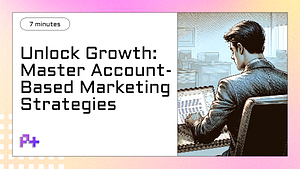1. What is Outbound Marketing?
Outbound marketing refers to traditional marketing strategies where businesses proactively reach out to potential customers, rather than waiting for them to come to them. This approach typically includes methods such as television and radio advertisements, print ads in newspapers and magazines, direct mail campaigns, cold calling, and trade shows. The primary goal of outbound marketing is to generate leads and create brand awareness by broadcasting messages to a wide audience, often without pre-qualifying the recipients. By casting a broad net, companies hope to attract attention and engage potential customers who may not be actively seeking their products or services.
One of the key characteristics of outbound marketing is its interruptive nature. Unlike inbound marketing, which focuses on attracting customers through valuable content and experiences, outbound tactics often interrupt the consumers daily activities. For example, a television commercial may disrupt a viewers show, or a cold call might interrupt a persons workday. While this approach can be effective in generating immediate responses, it can also lead to consumer fatigue, as many individuals find unsolicited advertising intrusive. Therefore, its crucial for businesses to balance their outbound efforts with strategies that consider the audiences preferences and behaviors.
Despite the rise of digital marketing and inbound strategies, outbound marketing remains relevant in todays marketplace. Many companies utilize a multi-channel approach, integrating outbound techniques with online efforts to maximize their reach. For instance, a business might combine direct mail campaigns with targeted online ads, ensuring that their message is consistently presented across various platforms. Additionally, advanced data analytics and targeting technologies have enhanced the effectiveness of outbound marketing, allowing brands to reach the right audience with tailored messages. Ultimately, understanding what outbound marketing entails and how it fits into a broader marketing strategy is essential for businesses looking to thrive in a competitive landscape.
2. Outbound Marketing Strategies
Outbound marketing refers to the traditional approach of reaching potential customers through direct communication methods. This strategy often involves techniques such as cold calling, direct mail, television and radio advertising, and trade shows. One effective outbound marketing strategy is cold emailing, where businesses send targeted emails to prospects who may not yet be familiar with their products or services. This method requires careful crafting of messages to ensure they capture attention and encourage engagement. By incorporating personalized elements and a strong call-to-action, companies can effectively convert leads into potential clients.
Another popular outbound marketing strategy is leveraging pay-per-click (PPC) advertising. This method allows businesses to place ads on search engines and social media platforms, ensuring visibility to a specific audience. By using targeted keywords related to their products, companies can drive traffic to their websites and generate leads. The benefit of PPC advertising is that it provides measurable results, allowing businesses to track the effectiveness of their campaigns and adjust strategies accordingly. Additionally, retargeting ads can keep the brand top-of-mind for potential customers who have previously engaged with the company’s content, enhancing the chances of conversion.
Participating in industry trade shows and events is also a potent outbound marketing strategy. These events provide businesses with the opportunity to showcase their products and services directly to a highly relevant audience. By setting up booths, distributing promotional materials, and engaging with attendees, companies can create personal connections that lead to meaningful relationships. Furthermore, the face-to-face interaction allows for immediate feedback and rapport-building, which can often lead to higher conversion rates compared to digital-only approaches. By combining these outbound marketing strategies, businesses can create a comprehensive marketing plan that effectively reaches and engages their target audience.
3. Pros and Cons of Outbound Marketing
Outbound marketing, often characterized by traditional advertising methods such as TV commercials, print ads, and cold calling, has its distinct advantages and disadvantages. One of the primary pros of outbound marketing is its potential for broad reach. With the ability to target a vast audience, businesses can generate brand awareness quickly and effectively. For instance, a well-placed advertisement on a popular television network can expose a company to thousands or even millions of viewers in a matter of seconds. This mass exposure can be particularly beneficial for new brands looking to establish themselves in a competitive market.
However, the downsides of outbound marketing are significant and cannot be overlooked. One major con is the often high cost associated with these marketing strategies. Television ads, for example, can require substantial investment not only for airtime but also for production. Additionally, outbound marketing strategies can sometimes lead to low conversion rates. Many consumers today are inundated with advertisements and may actively resist them, either by using ad blockers or simply tuning out. This means that while businesses might invest heavily in reaching potential customers, the actual engagement and resultant sales may not justify the expense.
Moreover, outbound marketing tends to be less targeted compared to inbound marketing strategies. This lack of precision can result in wasted resources, as companies may end up promoting their products or services to individuals who have little interest in them. In contrast, inbound marketing focuses on attracting customers through valuable content and interactions tailored to their needs. Thus, while outbound marketing can offer immediate brand visibility, it is essential for businesses to weigh these pros and cons carefully to determine if this approach aligns with their overall marketing strategy and goals.
4. Inbound vs. Outbound Marketing: Key Differences
Inbound and outbound marketing represent two distinct approaches to attracting and engaging customers, each with its unique strategies and objectives. Outbound marketing is characterized by traditional advertising methods that push messages out to a broad audience. This includes tactics such as television and radio ads, print advertising, telemarketing, and direct mail campaigns. The primary goal of outbound marketing is to reach potential customers directly, often interrupting their daily activities to deliver promotional messages. While this approach can generate immediate results, it often relies heavily on reaching a large audience, which can lead to lower conversion rates compared to more targeted strategies.
On the other hand, inbound marketing focuses on attracting customers through valuable content and experiences tailored to their needs and interests. By utilizing techniques such as search engine optimization (SEO), content marketing, social media engagement, and email newsletters, inbound marketing seeks to draw potential customers in rather than pushing messages out. This method fosters a more organic connection with the audience, as it often involves educating and nurturing leads until they are ready to make a purchase decision. Inbound marketing typically has a longer lead time but can result in higher-quality leads and improved customer loyalty over time.
Understanding the key differences between inbound and outbound marketing is essential for businesses looking to optimize their marketing strategies. While outbound marketing may yield quick results and is effective for brand awareness, it often suffers from decreasing effectiveness in a world where consumers are increasingly ad-averse. In contrast, inbound marketing builds relationships and trust through relevant content, making it more effective in converting leads into loyal customers. By integrating both approaches, businesses can create a balanced marketing strategy that maximizes reach and engagement, ensuring they capture attention in both the traditional and digital realms.
5. Wrapping Up: The Future of Outbound Marketing
As we look to the future of outbound marketing, its essential to recognize that this traditional approach is evolving rather than disappearing. While digital marketing trends often dominate the conversation, outbound marketing still holds significant value, particularly when integrated with modern technologies. Companies that leverage data analytics, artificial intelligence, and targeted outreach strategies are witnessing improved engagement and conversion rates. The future will likely see a more refined version of outbound marketing, where personalization and relevance are prioritized, ensuring that messages resonate more effectively with their intended audiences.
Moreover, the rise of omnichannel marketing is reshaping how businesses approach outbound strategies. Rather than relying solely on cold calls or mass email campaigns, businesses are beginning to adopt a more holistic view. By integrating outbound marketing efforts with inbound tactics, brands can create cohesive journeys for potential customers. This means that outbound marketing will increasingly complement inbound strategies, using insights gained from customer interactions to tailor outbound messages. The future will see businesses crafting compelling narratives that not only promote their products but also build relationships and trust with their audiences.
In conclusion, the future of outbound marketing is bright for those willing to adapt and innovate. By embracing new technologies and techniques, companies can transform traditional methods into powerful tools for engagement. As personalization and data-driven strategies become the norm, outbound marketing will not only survive but thrive in a landscape that demands both creativity and strategic thinking. For businesses aiming to stay ahead, investing in the evolution of outbound marketing is crucial, ensuring they remain relevant in an ever-changing marketplace.



